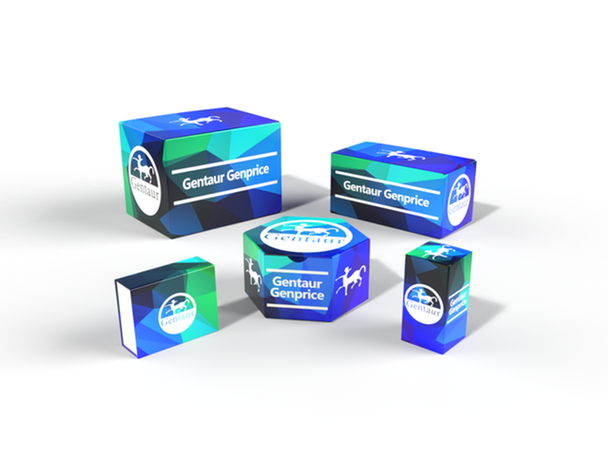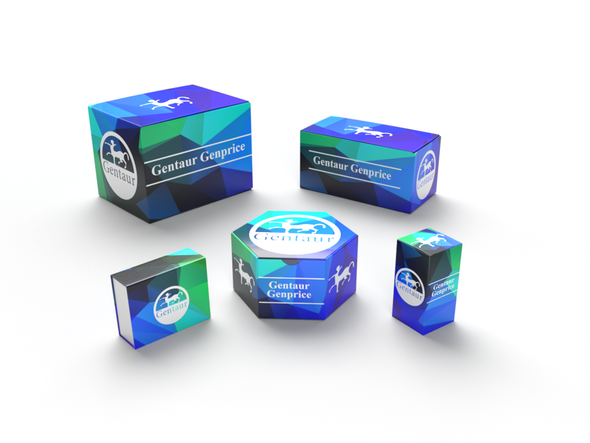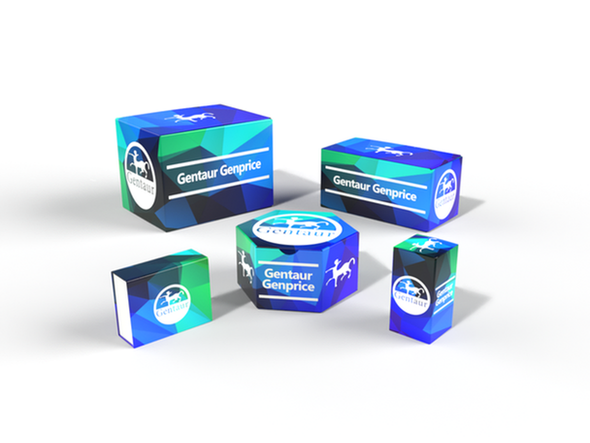Description
CTRP2 Antibody | 3561 | Gentaur UK, US & Europe Distribution
Host: Rabbit
Reactivity: Human, Mouse
Homology: N/A
Immunogen: CTRP2 antibody was raised against a 16 amino acid synthetic peptide from near the amino-terminus of human CTRP2.
The immunogen is located within amino acids 50 - 100 of CTRP2.
Research Area: Chemokines & Cytokines, Signal Transduction
Tested Application: E, WB
Application: CTRP2 antibody can be used for the detection of CTRP2 by Western blot at 1 μg/mL.
Antibody validated: Western Blot in human samples. All other applications and species not yet tested.
Specificiy: These proteins are often highly modified post-translationally and migrate in SDS-PAGE at positions other than their predicted size.
Positive Control 1: Cat. No. 1223 - Caco-2 Cell Lysate
Positive Control 2: N/A
Positive Control 3: N/A
Positive Control 4: N/A
Positive Control 5: N/A
Positive Control 6: N/A
Molecular Weight: N/A
Validation: N/A
Isoform: N/A
Purification: CTRP2 Antibody is affinity chromatography purified via peptide column.
Clonality: Polyclonal
Clone: N/A
Isotype: IgG
Conjugate: Unconjugated
Physical State: Liquid
Buffer: CTRP2 Antibody is supplied in PBS containing 0.02% sodium azide.
Concentration: 1 mg/mL
Storage Condition: CTRP2 antibody can be stored at 4˚C for three months and -20˚C, stable for up to one year. As with all antibodies care should be taken to avoid repeated freeze thaw cycles. Antibodies should not be exposed to prolonged high temperatures.
Alternate Name: CTRP2 Antibody: CTRP2, zacrp2, CTRP2, UNQ6349/PRO21054, Complement C1q tumor necrosis factor-related protein 2
User Note: Optimal dilutions for each application to be determined by the researcher.
BACKGROUND: CTRP2 Antibody: Adipose tissue of an organism plays a major role in regulating physiologic and pathologic processes such as metabolism and immunity by producing and secreting a variety of bioactive molecules termed adipokines. One highly conserved family of adipokines is adiponectin/ACRP30 and its structural and functional paralogs, the C1q/tumor necrosis factor-alpha-related proteins (CTRPs) 1-7. Unlike adiponectin, which is expressed exclusively by differentiated adipocytes, the CTRPs are expressed in a wide variety of tissues. These proteins are thought to act mainly on liver and muscle tissue to control glucose and lipid metabolism. An analysis of the crystal structure of adiponectin revealed a structural and evolutionary link between TNF and C1q-containing proteins, suggesting that these proteins arose from a common ancestral innate immunity gene. Of the CTRPs, CTRP2 is most similar structurally and functionally to adiponectin. Recombinant CTRP2 rapidly activated AMPK and MAPK in cultured C2C12 cells, leading to increased glycogen accumulation and fatty acid oxidation.






